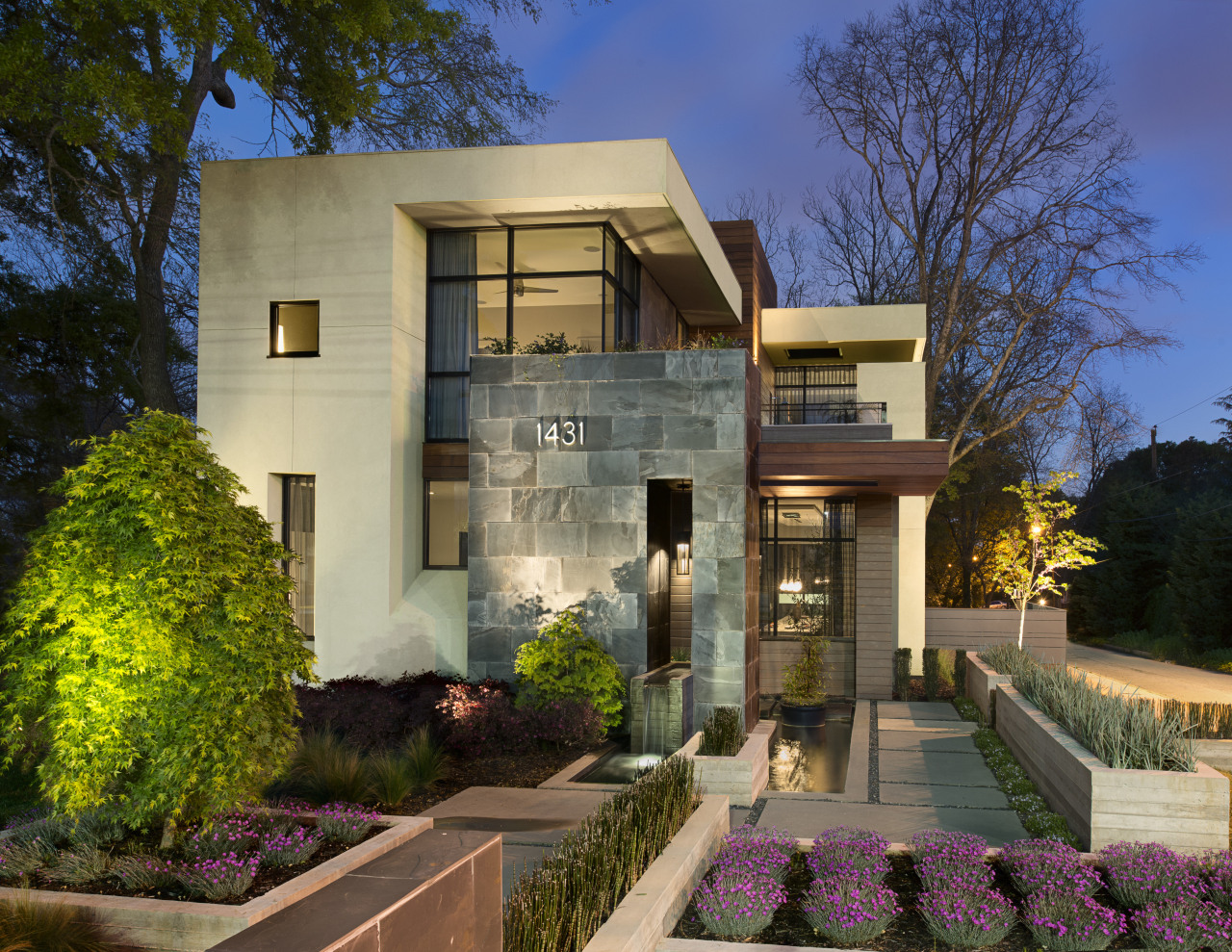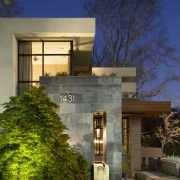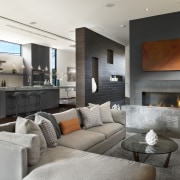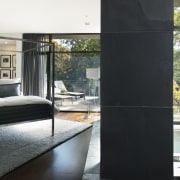Outside the box
Highly contemporary house in Atlanta

Taking the less conventional approach to design is a sure way to give a house a strong identity and sense of place. Invariably, form is dictated by function, and building materials take on a whole new significance.
For this project, architect Scott West created a bold, multi-layered facade where walls slice through windows and cutouts provide changing perspectives that blur the line between inside and out. The sculptural, geometric form of the architecture extends to the landscaping, where the entry path turns at right angles and is flanked by terraced gardens.
"The house is on an exposed corner lot," says West. "Consequently, the owner wanted the suggestion of a barrier between the street and the house without the unfriendly look of a fence. We turned the front door sideways so it is not an open invitation for just anyone to wander up the path."
Strong, bold materials and an absence of large windows on the corner elevation also create a visual defense. West teamed natural slate, ipeª hardwood and stucco with a new proprietary bamboo tongue-and-groove siding. Each material defines a separate piece of the 3-D composition.
"Rather than presenting rooms as a collection of little boxes, I designed the house as a sculptural assembly of spaces," says West. "The gaps in between the solid planes create a negative detailing, which is where the windows are positioned."

At the front, a chimney-like element wrapped in ipeª wood encloses mechanical services, while a matching horizontal plane forms an awning above the entry.
"The ipeª and bamboo help to bring a little organic softness to the modern design and the hard-edged stone and stucco forms," the architect says.
Most of the materials appear to slice through the house to form interior walls. Slate flooring also runs from the inside to the outside, creating a seamless transition between indoor and outdoor living areas.
A semi-freestanding wall of wood defines the main circulation axis through the house. As with the exterior, this features cutouts that allow glimpses of the kitchen and dining areas on the other side. West says the wall is clad in prefinished wood flooring with mitered corners, which was a highly cost-effective solution.
Interior designer Catherine Cocke enhanced the gray tone-on-tone color palette in the house. In the large, galley-style kitchen, gray cabinets are teamed with custom marble countertops and a Porcelanosa white tile backsplash. However, it is the extra-long island that forms the centerpiece of the room.
"The lot has a slight slope, which is absorbed within the design," says West. "The floor level steps down in the hallway and kitchen. We designed a continuous island countertop, but because the floor level is higher at one end than the other, the top is an ideal height for a dining table. At the other end the floor is 6in lower, which is the right height for working at the island."
Set on the lower level, the living room has a high ceiling and a light, airy feel. This is helped by the seamless flow to a patio, which effectively doubles the size of the room. Here, the ipeª wood appears to slide through the glass to form a large wall and a suspended ceiling element.
In the master suite, it is the slate as well as the ipeª, that flows from inside to out.
Story by: Colleen Hawkes
Photography by: Galina Coada
Home kitchen bathroom commercial design
Colourful and casual
Underpinning the artistic
Connected to the ocean
US Home & Architectural Trends Vol. 30/5
Home & Architecture Trends highlights great residential architecture. This book provides prospective home builders a...
Read More













